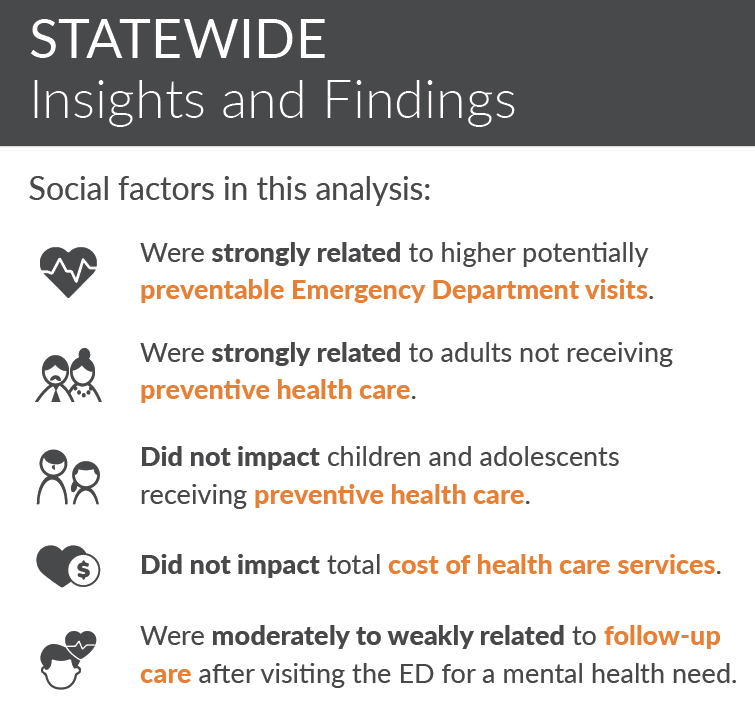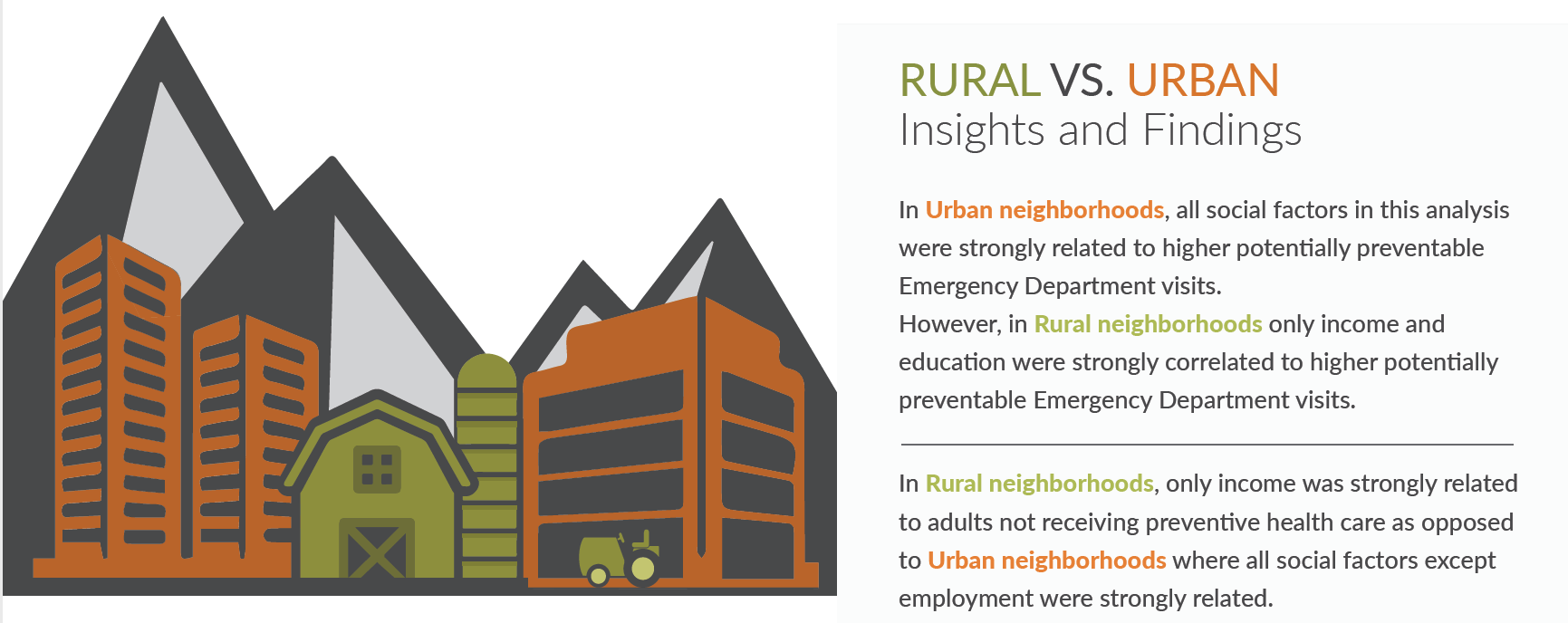April 6, 2023 – A new analysis from the Center for Improving Value in Health Care (CIVHC) indicates that social factors such as income, housing, race, and education are strongly associated with potentially preventable visits to the emergency department (ED) – one of the costliest health care services. The Health Equity Analysis, the first of its kind to combine health care data from the Colorado All Payer Claims Database (CO APCD) with social and economic information, also found that adults in Colorado with these same social factors tend to receive preventive care less frequently than those with fewer barriers.
It is well known that the environment and circumstances in which someone lives has significant impact on whether they live a healthy life. In order to address health inequity and develop effective interventions and treatments at the community level, it is necessary to understand the impact of social factors on health outcomes.

CIVHC began working to combine social and health care data in 2020 and the Health Equity Analysis is the first public report to use this new capability of the CO APCD. It includes five social measures based on two sources: the U.S. Census Bureau’s American Community Survey (ACS) and the Centers for Disease Control and Prevention’s (CDC) Social Vulnerability Index themes. The health care measures are from CIVHC’s Community Dashboard, which uses CO APCD claims to understand how different aspects of health care vary across Colorado.
The analysis shows that, across Colorado, the five social factors evaluated – income, education, employment, housing/transportation, and race/ethnicity/language – were most strongly related to higher potentially preventable ED visits and adults not receiving preventive health care.

However, while the trends remained the same in urban regions of the state, in rural areas only income and education levels impacted ED visits while only income influenced preventive care.

Differences between rural and urban regions were not the only significant disparities the report captures. The report is built at the census-tract level making it possible to explore neighborhood by neighborhood. This detailed information highlights stark differences in the circumstances and health care utilization even between bordering communities and those in close proximity:

“CIVHC envisions a world where everyone has the same opportunity to be healthy and has access to equitable, affordable, high-quality health care,” says Kristin Paulson, CEO and President of CIVHC. “Tools like the Health Equity Analysis help CIVHC fulfill our mission to support partners and communities in Colorado – and across the nation – with the unbiased data required to make both large-scale systemic shifts and person-level changes to improve lives.”
Additional insights from the Health Equity Analysis are available in the interactive report and infographic on civhc.org. If you have any questions about the Health Equity Analysis or any of CIVHC’s public reports, please email info@civhc.org.
About CIVHC
CIVHC helps a diverse range of individuals, communities, and organizations make informed decisions to reduce health care costs and health inequities while improving the health and lives of Coloradans. We have a number of transparency tools available including:
- Shop for Care
- Provider Payment Tool
- Affordability Dashboard (Low Value Care, Drug Rebates, and more)
- Telehealth Services Analysis